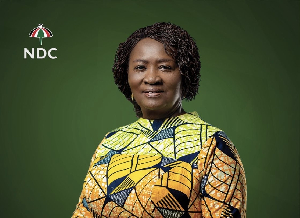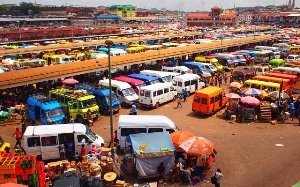 Coronavirus was declared a global pandemic after the virus spread to several countries
Coronavirus was declared a global pandemic after the virus spread to several countries
Unless the world develops a transformative change in its approach to handling infectious disease, future pandemics will emerge often, spread more quickly, do more damage to the world economy and take more lives than COVID-19.
Since the Great Influenza Pandemic in 1918, COVID-19 is the 6th global health pandemic and its source it’s in microbes found on animals. Like all pandemics it is caused mainly by human activities according to a report by UN Environment. It is projected that approximately 1.7 million currently undiscovered viruses exist in wildlife and birds-of which up to 850,000 could have the potential to
infect people.
Similar human activities that cause climate change and biodiversity loss also drive pandemic risk via their effects on the environment. Examples of such activities that create pathway to pandemics are the way we use land; the expansion and intensification of agriculture; and unsustainable trade, production and consumption disrupt nature and increase contact between wildlife, livestock, pathogens and people.
The risk of pandemic can be reduced by decreasing the activities of human that drive the loss of biodiversity, by protecting conservation areas through strategies that will reduce unsustainable exploitation of sensitivity ecosystems around the world.
This will reduce wildlife-livestock-human contact and help prevent the spillover of new diseases.
“The overwhelming scientific evidence points to a very positive conclusion,” said Dr. Daszak. “We have the increasing ability to prevent pandemics – but the way we are tackling them right now largely ignores that ability. Our approach has effectively stagnated – we still rely on attempts to contain and control diseases after they emerge, through vaccines and therapeutics. We can escape the era of pandemics, but this requires a much greater focus on prevention in addition to reaction.”
“The fact that human activity has been able to so fundamentally change our natural environment need not always be a negative outcome. It also provides convincing proof of our power to drive the change needed to reduce the risk of future pandemics – while simultaneously benefiting conservation and reducing climate change.”
According to a report by IPBES Workshop on Biodiversity and Pandemics relying on responses to diseases after their emergence, such as public health measures and technological solutions, in particular the rapid design and distribution of new vaccines and therapeutics, is a “slow and uncertain path”, underscoring both the widespread human suffering and the tens of billions of dollars in annual economic damage to the global economy of reacting to pandemics.
Pointing to the likely cost of COVID-19 of $8-16 trillion globally by July 2020, it is further estimated that costs in the United States alone may reach as high as $16 trillion by the 4 the quarter of 2021. The experts estimate the cost of reducing risks to prevent pandemics to be 100 times less than the cost of responding to such pandemics, “providing strong economic incentives for transformative change.”
The report outlined several policy options that would help to minimise and address pandemic risk.
These are:
? Introduction of a high-level intergovernmental council on pandemic prevention to provide decision and policymakers with the best science and evidence on emerging diseases; predict high-risk areas; evaluate the economic impact of potential pandemics and to highlight links between the degradation of nature and increasing pandemic risks research gaps. Such a council could also coordinate the design of a global monitoring framework.
? Countries setting mutually-agreed goals or targets within the framework of an international agreement – with clear benefits for people, animals and the environment.
? Institutionalising the ‘One Health’ approach in national governments to build pandemic preparedness, enhance pandemic prevention programs, and to investigate and control outbreaks across sectors.
? Developing and integrating pandemic and emerging disease risk health impact assessments in key development and land-use projects, while reforming financial aid for land-use so that benefits and risks to biodiversity and health are recognised and openly targeted.
? Guaranteeing that the economic cost of pandemics is factored into consumption, production, and government policies and budgets.
? Allowing changes to reduce the types of consumption, globalised agricultural expansion and trade that have led to pandemics – this could include taxes or levies on meat consumption, livestock production and other forms of high pandemic-risk activities.
? Reducing zoonotic disease risks in the international wildlife trade through a new
intergovernmental ‘health and trade’ partnership; reducing or removing high disease-risk species in the wildlife trade; enhancing law enforcement in all aspects of the illegal wildlife trade and improving community education in disease hotspots about the health risks of wildlife trade.
? Appreciating Indigenous Peoples and local communities’ engagement and knowledge in
pandemic prevention programs, achieving greater food security, and reducing consumption of wildlife.
? Closing critical knowledge gaps such as those about important risk behaviours, the relative importance of illegal, unregulated, and the legal and regulated wildlife trade in disease risk, and improving understanding of the relationship between ecosystem degradation and restoration, landscape structure and the risk of disease emergence
Ref
1.https://ipbes.net/sites/default/files/2020-
10/20201028%20IPBES%20Pandemics%20Workshop%20Report%20Plain%20Text%20Final_0.pdf
2. https://www.who.int/news-room/q-a-detail/one-health
3. https://ipbes.net/biodiversity-pandemics-participants
- Commonwealth countries must create 5,000 jobs everyday till 2030 - Foreign Affairs Minister
- Use COVID-19 fund to strengthen health care, immunization financing — HFFG
- Parliament records a new case of coronavirus
- Breach of coronavirus safety protocols: GMA calls for action
- Chadians line up for Sinopharm as coronavirus vaccination campaign begins
- Read all related articles












